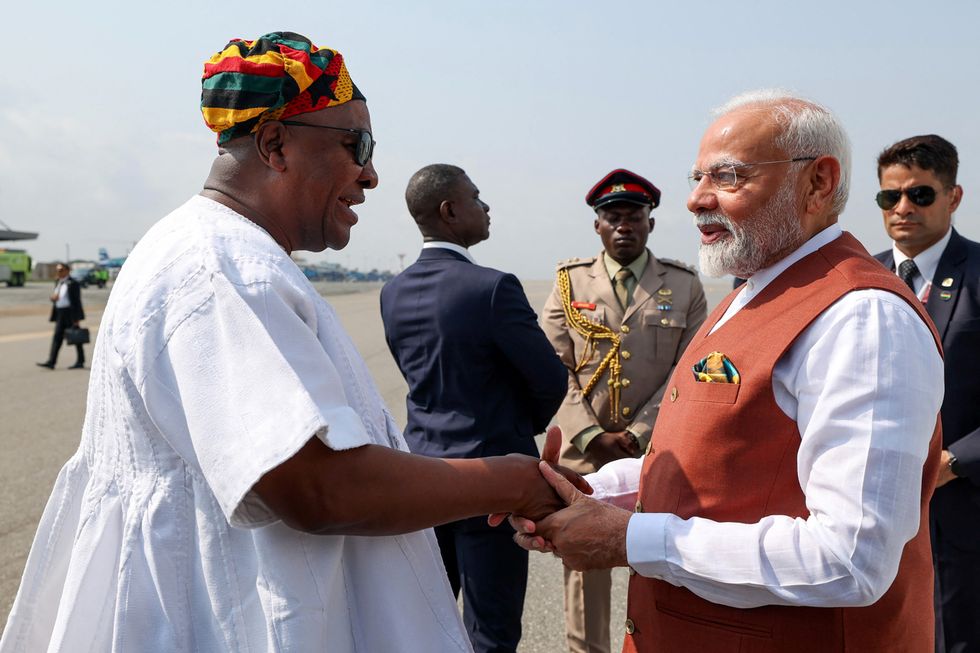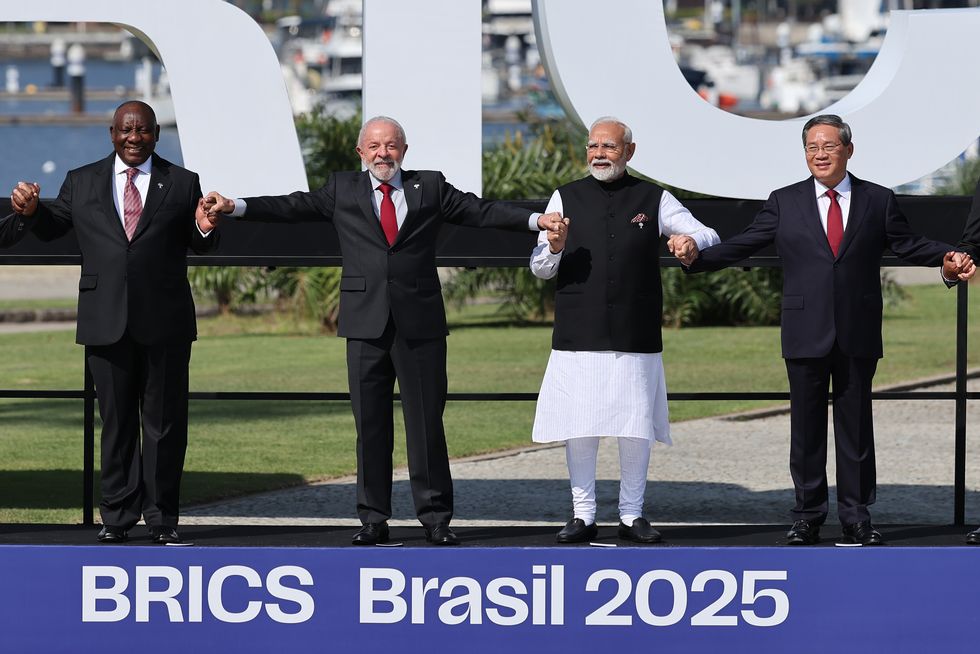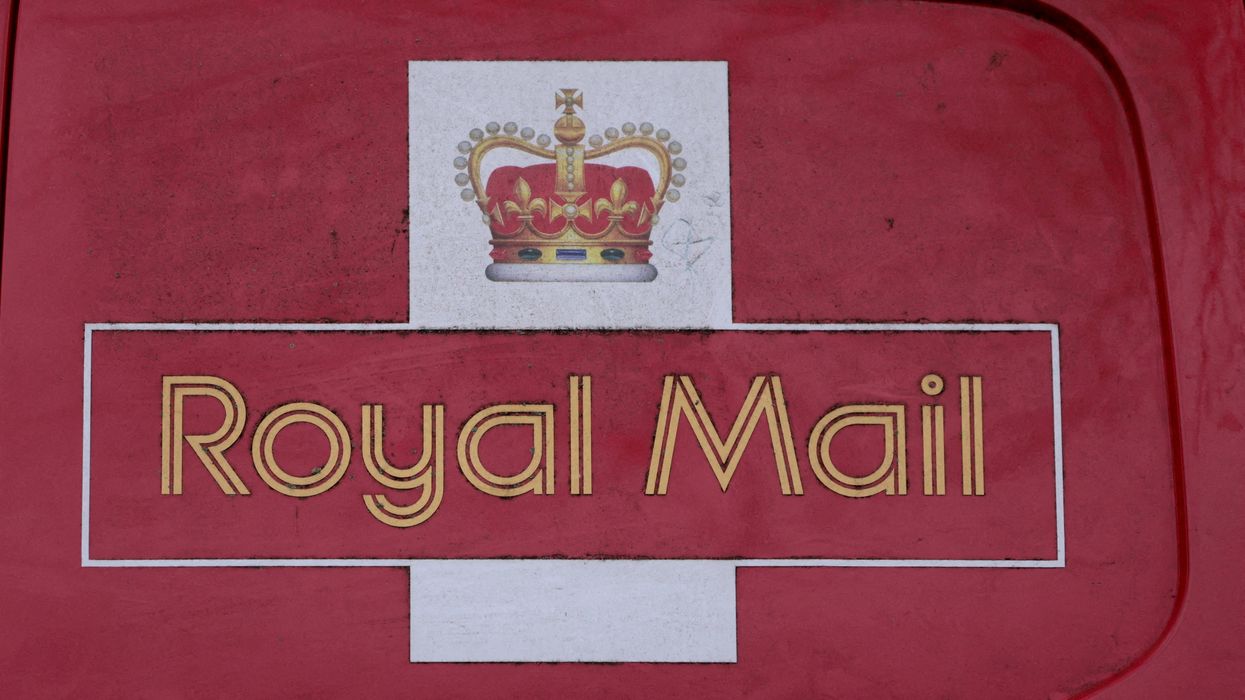by NADEEM BADSHAH
MORE non-Asian women are ordering traditional Pakistani clothing after the Duchess of Cambridge gave it the royal seal of approval on her recent trip to the country.
Shalwar kameez, kurtas and Asian-inspired sequined gowns are set to be on more Christmas wish lists this year after the royal wowed fashionistas during her visit in October, along with the Duke of Cambridge.
London-based clothing retailer Studio by TCS said there has been more interest from non-Asian women in the UK and US following the royal couple’s visit to Pakistan.
The duchess, 37, chose outfits by designers Maheen Khan and Catherine Walker, who also made outfits for her mother-in-law, the late Diana, Princess of Wales, during her trip to the country back in 1991.
During their time in Pakistan, Catherine also donned a turquoise shalwar kameez and headscarf designed by Khan while on a visit to the Badshahi Mosque in Lahore.
Sahar Ahmed, director of Studio by TCS, said Pakistani fashion now has the royal stamp of approval.
Ahmed told Eastern Eye: “We do have a lot of traffic coming from the UK and US for Kate Middleton’s outfits”, referring to the duchess’s maiden name.
“As we have the designer Maheen Khan on our platform, what we have noticed is a lot of British and Americans, not of Pakistani descent, shifting their focus towards Pakistani kameez and shirts. We have had a few [customers] buy almost the identical outfit as well.
“Our main clientele is usually the Pakistani diaspora, but we have seen a hike in orders from foreigners since the royal visit.
“She mixed high-end designers with high-street brands as well – which was wonderful to see – a royal wearing something from Gul Ahmed, for example, or a Bonanza Satrangi dupatta which are both high street brands or Casual Pret [label]. Usually their prices are not above £30.”
He added: “We saw a subtle yet graceful homage to Lady Diana, and pictures of Lady Diana in shalwar kameez were also all over social media, which again reinforced the gracefulness of Pakistani fashion.
“Usually non-Asians see Pakistani wedding wear fashion as quite heavy and [something] which can be overwhelming. However, the luxury and Casual Pret is more subtle yet extremely elegant. I think that is what has been the appeal.”
The Duke of Cambridge, 37, also earned praise for his choice of traditional shalwar kameez, which is expected to lead to an increase in popularity for the garment in Pakistan.
Mani Kohli, founder of the Khubsoorat fashion brand in the UK, told Eastern Eye: “It is a mark of respect to don the garment. It may happen in Pakistan, but not here.
“The fashion is (about) less embroidery, more patterned and embellishment or chained. Mostly trouser bottoms than shalwar with a draped kurta last year and this year.
“I have seen more men wanting to dress for occasions, simple and stately and well made than previously. They are loving it, going for something comfortable and lighter.
“Kate Middleton has done a wonderful job, she looked elegant. Prince William also looked good in a sherwani.”
Anika Moiz, a Pakistani marketing strategist, said: “Pakistani people are head over heels in love with Kate Middleton’s style since the moment she stepped out of the plane in a light blue Pakistani dress.
“The shalwar kameez with dupatta is not currently the most fashionable choice as per Pakistani fashion trends at the moment,” said Moiz.
“While some people are debating that she could have worn more updated styles, I personally think her dresses seem timeless, which is important considering these pictures will be used and referred to even after decades, just like Diana’s style is right now being compared to Kate’s.”
Ania Fawad, a celebrity fashion stylist in Pakistan, also praised the duchess’s traditional and minimalist choice of garments. She said: “The outfits were effortlessly chic, nothing looked forced, or like she was trying too hard.”
“I know a lot of comparisons were made to Princess Diana’s style on her visit to Pakistan, and I’m sure the designers did draw inspiration from Princess Di for colour combinations.
“But overall I feel like Kate Middleton still managed to stay true to her own style and looked like herself.”
Eastern Eye reported in 2018 that the Nehru jacket was back in fashion after French shoe designer Christian Louboutin wore a gold and burgundy version at the Met Gala fundraiser in New York.
The long-length tailored coat with a standing collar was also on show at the weddings of Bollywood stars Sonam Kapoor and Neha Dhupia.
It was also the outfit donned by Sky Sports’ cricket commentators covering the Indian Premier League (IPL).
The garment got its name from Jawaharlal Nehru, Indian’s prime minister from 1947 to 1964. It was traditionally worn by courtiers in the Mughal era.















 John Dramani Mahama welcomes Modi on his arrival in Accra last Wednesday (2)
John Dramani Mahama welcomes Modi on his arrival in Accra last Wednesday (2) South Africa’s president Cyril Ramaphosa, Brazil’s president Luiz Inacio Lula da Silva, Modi and China’s premier Li Qiang at the Brics summit last Sunday (6)
South Africa’s president Cyril Ramaphosa, Brazil’s president Luiz Inacio Lula da Silva, Modi and China’s premier Li Qiang at the Brics summit last Sunday (6)

